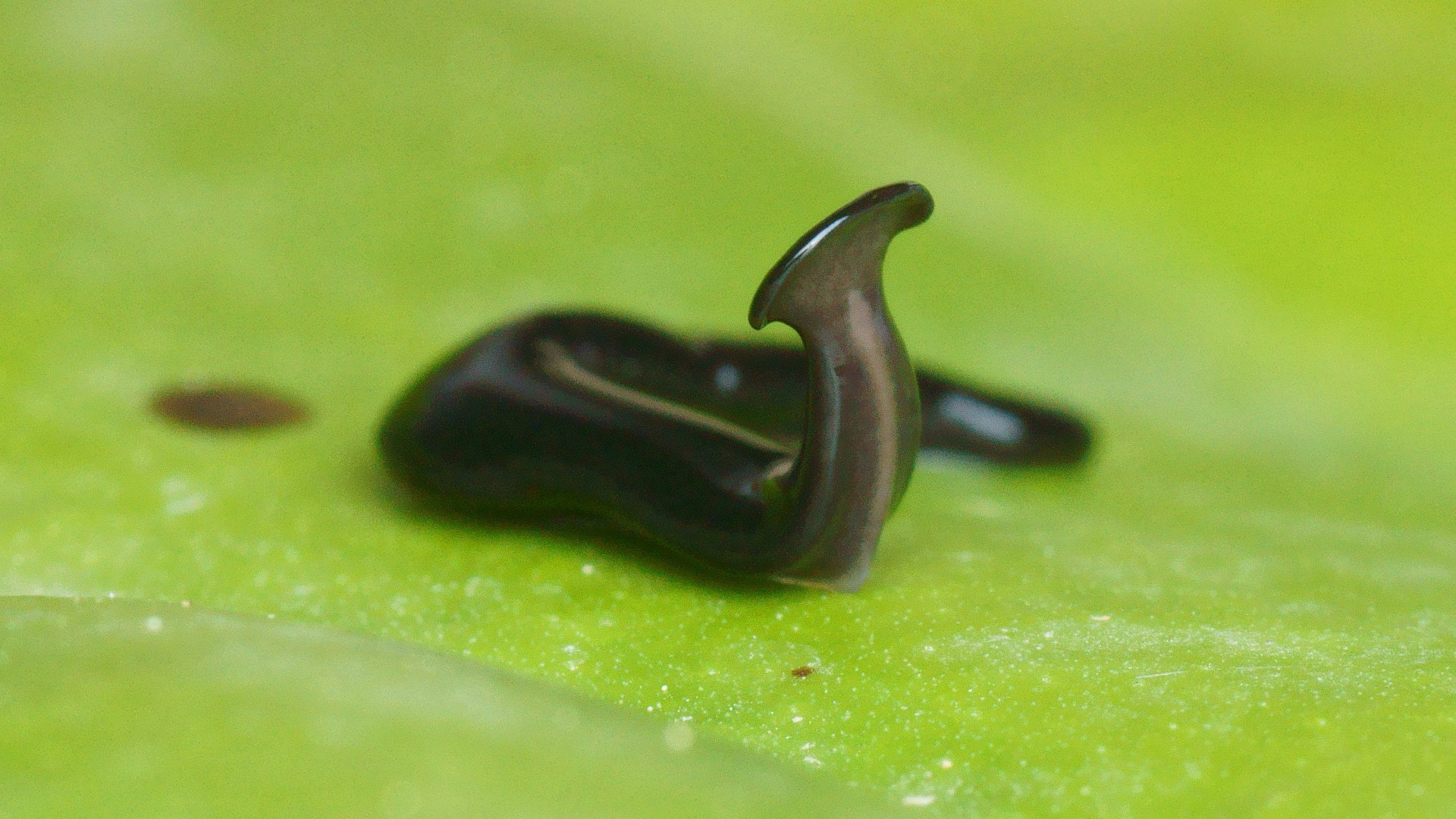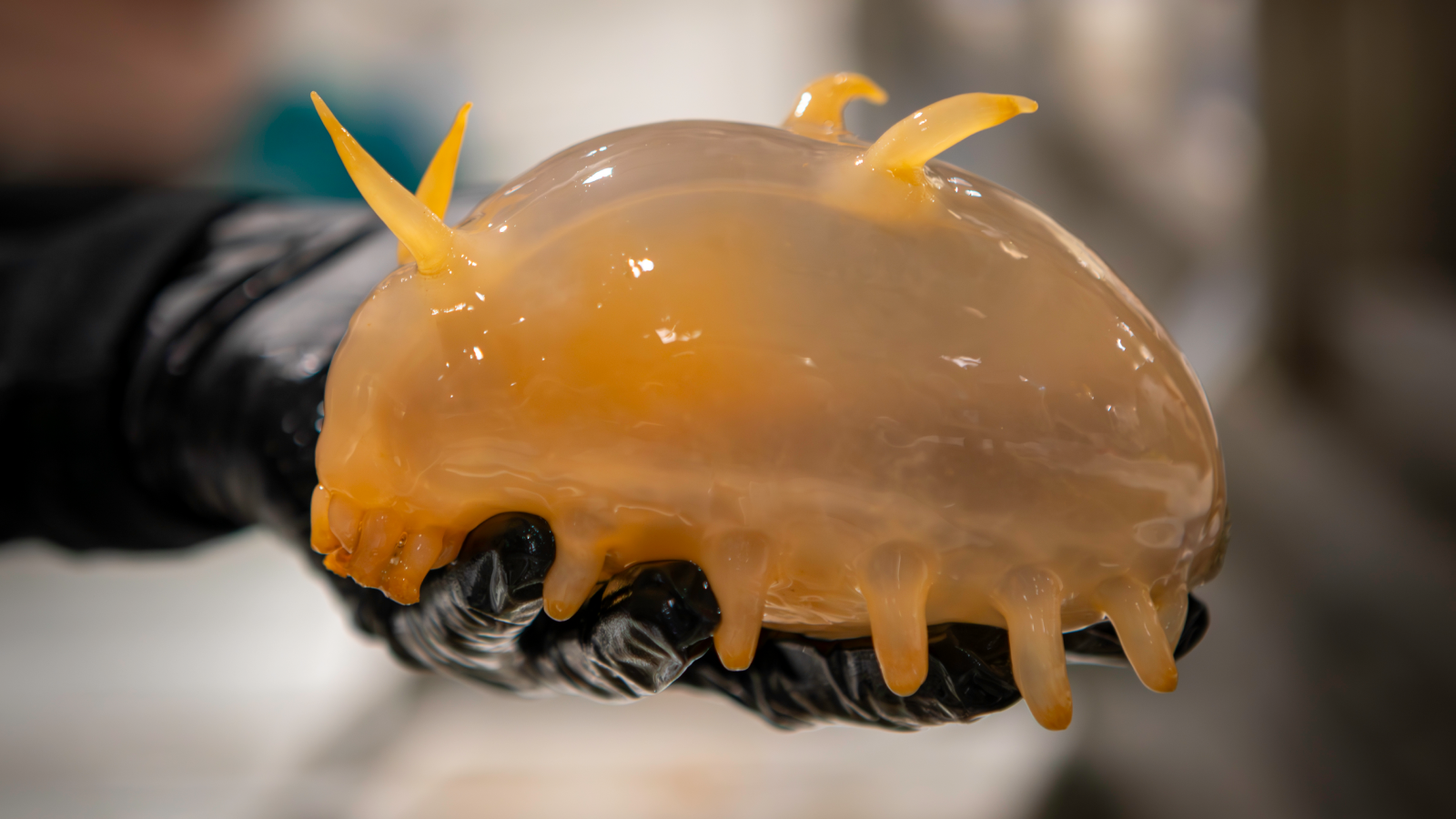Alien hammerhead flatworm named after pandemic
Hammerhead flatworms are often described outside their native range.

Scientists have discovered an alien hammerhead flatworm species that looks a bit like a miniature king cobra, or perhaps an itty-bitty snake with a moustache. The researchers found the tiny creatures hunting snails in France and Italy, and they’ve named the invaders after the COVID-19 pandemic, according to a new study.
These new hammerhead flatworms are among two newly described species found in countries that researchers believe are not part of their native range so they were very likely introduced there by humans.
Scientists dubbed the first soil-dwelling predator species Humbertium covidum, with covidum being a reference to COVID-19 as an "homage to the numerous casualties" of the pandemic and because much of the 55-page study was written during lockdowns.
"Due to the pandemic, during the lockdowns most of us were home, with our laboratory closed. No field expeditions were possible," lead author Jean-Lou Justine, a professor at the Muséum National d'Histoire Naturelle (National Museum of Natural History) in Paris, said in a statement. "I convinced my colleagues to gather all the information we had about these flatworms, do the computer analyses, and finally write this very long paper."
Related: 11 animals named after US presidents
Typically found in warm parts of Asia, hammerhead flatworms are often accidentally transported around the world by humans in soil from the plant trade. These flatworms can reproduce asexually, so one hammerhead flatworm can give birth to offspring without a mate, making it easier for them to establish themselves as an invasive species — organisms that cause ecological or economic damage to an environment where they are not native, Live Science previously reported.
Humbertium covidum were discovered in two gardens in Pyrénées-Atlantiques in southwest France and a garden in Veneto in northern Italy, although the species likely originated in Asia. Some reports indicate the species may also be in Russia, China and Japan, according to the study. The researchers discovered the second species, which they named Diversibipalium mayottensis, on Mayotte, a French island off the east coast of Africa in the Indian Ocean. This species could have been introduced to Mayotte from Madagascar.
Sign up for the Live Science daily newsletter now
Get the world’s most fascinating discoveries delivered straight to your inbox.
The researchers studied the anatomy and morphology of the flatworms and carried out genetic analysis to formally describe the new species. Diversibipalium mayottensis have a unique green-blue iridescence, and the researchers determined the species belongs to a hammerhead sister group, distinct from all other hammerhead flatworms. This species could therefore be important to understanding the evolutionary history of hammerhead flatworms.
Both of the new species measure about 1.2 inches (3 centimeters) long. That's small for hammerhead flatworms, which can grow to be more than 15 inches (40 centimeters) long, and may explain why the new species have previously been overlooked by researchers, according to the statement.
The findings were published Feb. 1 in the journal PeerJ.
Originally published on Live Science.

Patrick Pester is the trending news writer at Live Science. His work has appeared on other science websites, such as BBC Science Focus and Scientific American. Patrick retrained as a journalist after spending his early career working in zoos and wildlife conservation. He was awarded the Master's Excellence Scholarship to study at Cardiff University where he completed a master's degree in international journalism. He also has a second master's degree in biodiversity, evolution and conservation in action from Middlesex University London. When he isn't writing news, Patrick investigates the sale of human remains.









